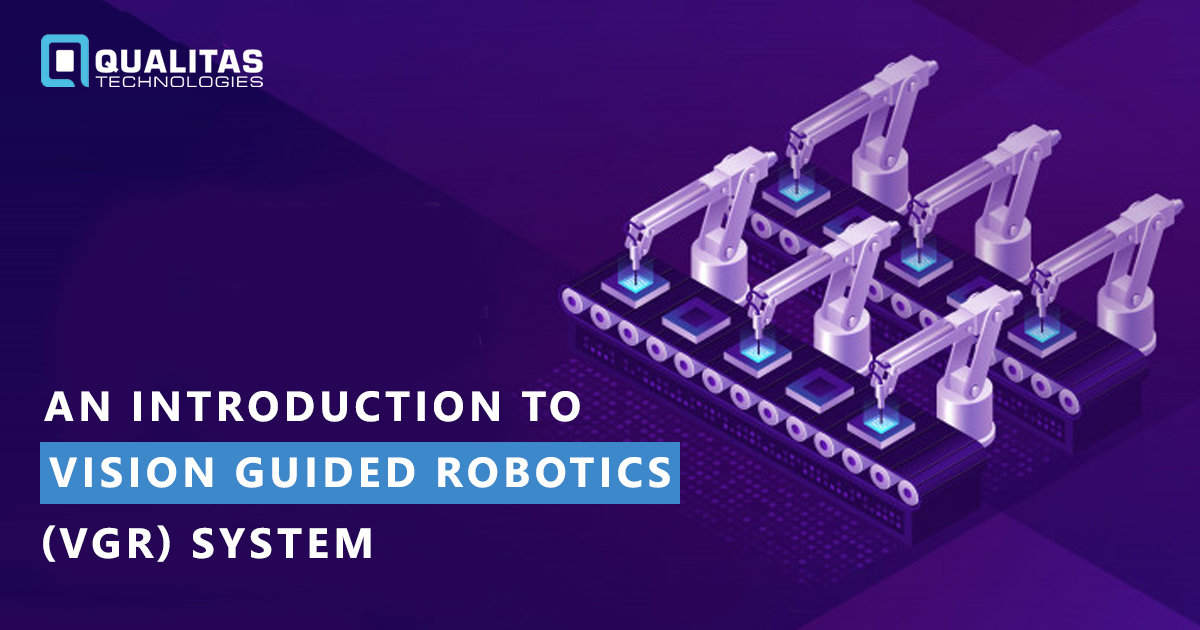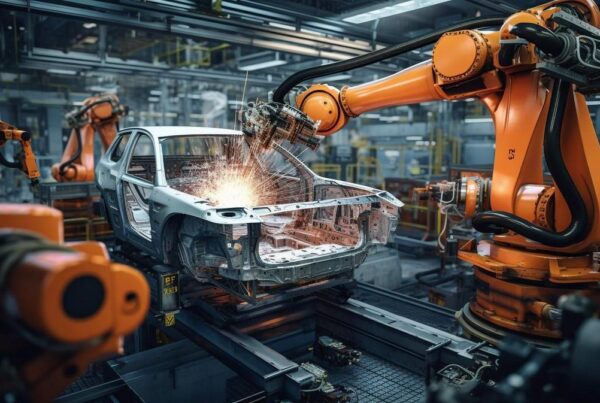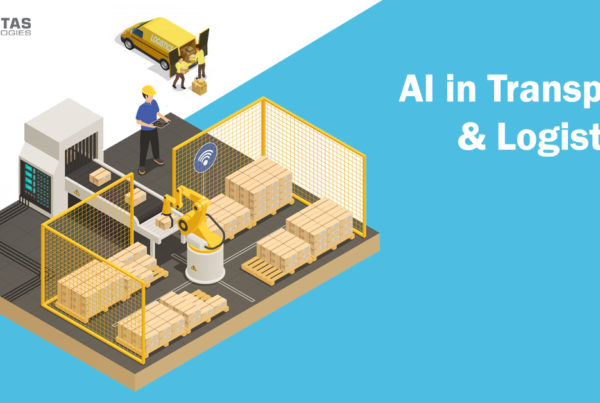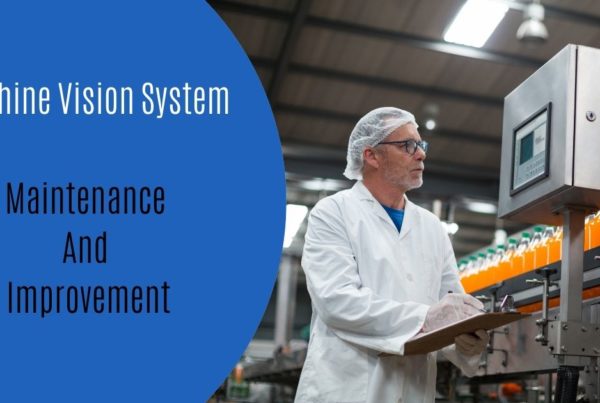
Robotic process automation has reached the next level, with vision automation making it faster, more accurate, intelligent, cost-effective, and versatile. It is a must-have solution for industries that face challenges like severe shortages of labor, dangerous tasks, or repetitive work.
What is Vision Guided Robotics?
Vision-guided robotic systems are a combination of robotic applications aided by a Machine Vision system. A specialized camera takes a picture of an object and analyses the image to send precise coordinates to a robotic arm. The robotic arm then moves to the desired position.
They have two main components –
- Industrial robotic arm
- Industrial vision system
Industrial Robotic Arm
It is usually made up of 4-6 joints and resembles a human arm, with a wrist, forearm, elbow and shoulder. Robotic arms come in varying styles, sizes and abilities, providing simple linear motions to complex seven-axis motions.
The six-axis robot has six degrees of freedom. It can move in six different ways, unlike the human arm, which has seven degrees of freedom. Industrial robotic arms provide programmable motion to pick-and-place a part at the desired location with a specified speed.
Robotic software allows the robotic application to be programmed to perform different robotic motions.
An industrial robotic arm is usually made of steel or cast. A robotic controller rotates motors that are attached to each joint.
Industrial Vision System
Machine Vision works as the eyes of the robot application. Machine vision systems in robotics comprise a machine vision camera, appropriate lighting, and image processing software. Depending on the technology involved, industrial vision systems can be used in various applications that involve precision and accuracy.
Also, Read Robotic Process Automation – Carving the Future of Different Businesses
Robot and Vision Systems Work Hand in Hand
In a robot vision system, the camera takes a picture of the working area or object. The robot will manoeuvre, and the software directs the robot.
Integrated Machine Vision With Robotic Guidance Applications
Robot vision systems perform a variety of tasks:
- Welding
- Assembly of parts
- Handling raw materials and finished goods
- Packaging of products
- Placing parts in different places, positions, and assemblies
- Dispensing fluids in precise locations
- Palletization
- Inspection and quality control
- Measurement
- Pick and Place
In systems where machine vision is integrated with robotic guidance applications, the machine vision system aided by robot vision helps the robot discover the location of an object in space so that the robotic arm can be guided to pick and place it at the desired point.
2D Guidance
2D machine vision is done with a digital camera and software that analyses a digital image of the part’s 2D location and orientation for robotic processing. It provides the place of a part or product in a single plane even if the product is moving like on a conveyor.
3D Guidance
A 3D Machine Vision system processes parts randomly located across three dimensions and can accurately discover each part’s 3D orientation. This kind of flexibility provides greater opportunities for using Robotic process automation in a growing base of applications. All 3D images are similar, but how the basic image is acquired and processed differs.
Passive Imaging
With a single camera or multiple cameras, passive 3D imaging uses standard machine vision illumination to acquire the camera’s image and requires no special lighting techniques. It is not the best suited for 3D imaging.
Active Imaging
It is a widely used 3D imaging method that uses patterned lighting and a single camera or multi-camera to create visible features on the surface of the scene.
Laser Triangulation Scanning
Here, a laser transmitter, a camera, and the object to be scanned are brought together for digitization and to get the object’s spatial coordinates.
Time of Flight
Time-of-flight imaging uses specialized imaging sensors or cameras to calculate the distance between the camera and the object by timing pulsed or phase-modulated light reflections.
Challenges In Using Vision Guided Robots
Vision guided robots are more advanced than ever, but there are some challenges around them –
Camera-Robot Coordination
Precise and complex integrated engineering is required for vision-guided robotics to integrate machine vision and robot control software platforms to calibrate the robot’s actions to the camera’s field of view (FOV) and any objects within it.
Axes of Retrieval
The vast majority of articulated robots have six axes of movement, also called six degrees of freedom. But it still can’t mimic a human arm that can move in seven axes of freedom.
Random Bin Picking
Bin picking is challenging due to randomness, object identification and differentiation, grip optimization, and path planning.
Also, read our case study– Robot Automation Assistance
Benefits of Vision Guided Robotics
Vision guided robotics have the promise to automate extremely complex tasks and offer many benefits –
- They respond well to changes in the operating environment leading to reduced downtime.
- They increase the throughput in assembly lines allowing companies to get ROI quicker.
- They can improve product quality and reduce production costs.
Future of Manufacturing with Robotic Guidance
Robot vision systems play a crucial role in industries, and the future looks bright. With innovation in 2D and 3D vision technology, they can be customized for more applications and small and big businesses. As companies increase customization in their products and services, the demand for robotic vision systems will grow. They can play a crucial role in 24×7 production.
Conclusion
Robot vision systems are the future in many aspects of manufacturing. They allow flexibility in product lines and promise to deliver consistent performance in complex operations.
Get In Touch With Us





